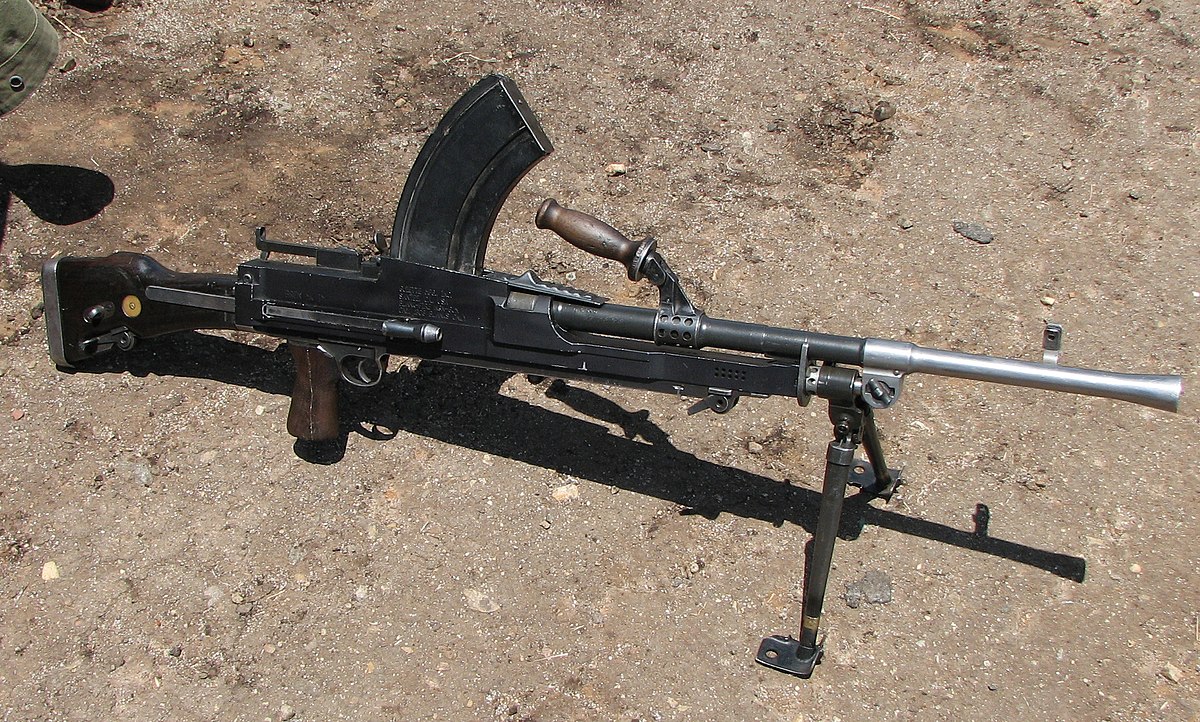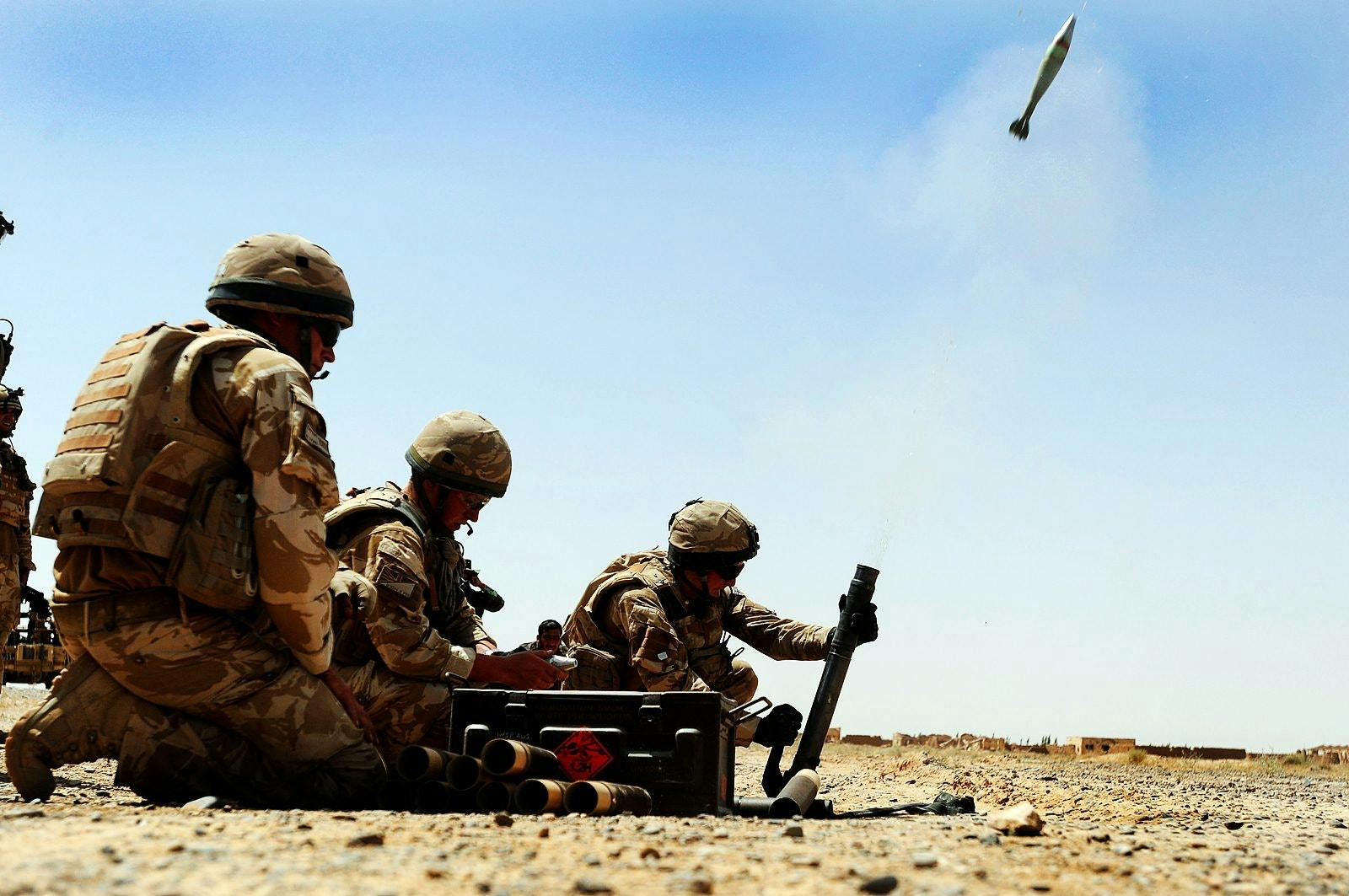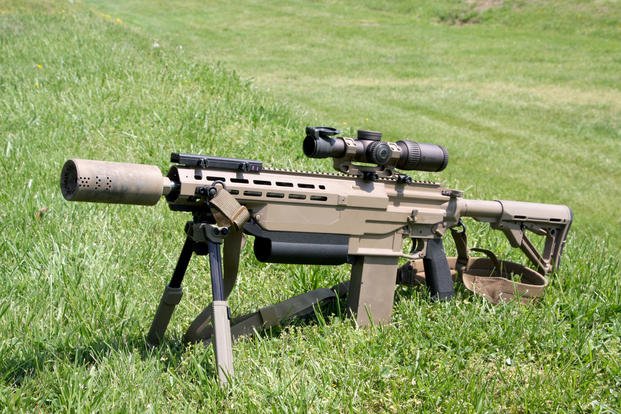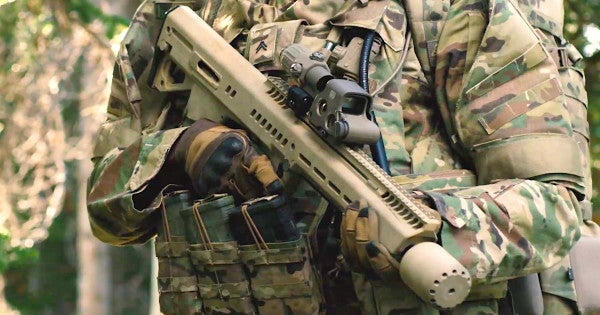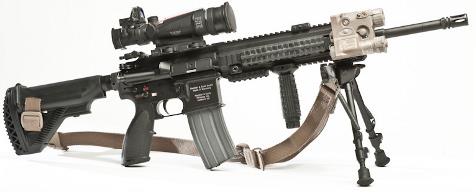Deleted member 1487
AFAIK this thread has yet to be done as a stand alone topic:
What if the US army realized in the late 1930s when starting to rearm that the BAR production equipment required replacement and instead opted to find a cheaper alternative to place into mass production and bought a .30-06 Bren from the British (all they'd really have to do is modify the receiver to take the longer bullet and use either BAR mags or modified BAR mags)? The BAR cost roughly twice as much in 1941 as the Bren and though both got cheaper over the course of the war the Bren remained substantially less expensive to make. Plus it is a true LMG.

 en.wikipedia.org
en.wikipedia.org
How does this impact US infantry firepower during WW2 and after? How long would the .30-06 or a 7.62 NATO Bren continue to serve? Would we eventually see a belt fed version instead of the M60? I got interested in this because of coming across the 1946 Fort Benning infantry conference, which laid out what was necessary for the infantry going forward and the top line item was to get a true LMG for the squad and dump the BAR. Most of the reforms were enacted in time for Korea, but not the adoption of a squad LMG due to budget issues and WW2 stockpiles; the reforms enhanced infantry performance, but the BAR remained major weak point that the M60 was supposed to correct. With all the complaints about the M60 design, it would seem the Bren modified to fire 7.62 NATO would actually be quite a bit better in Vietnam then; in the jungle the magazines would probably do better than belts of ammo given the British experiences with the Bren in the Pacific/Asia in WW2.
What if the US army realized in the late 1930s when starting to rearm that the BAR production equipment required replacement and instead opted to find a cheaper alternative to place into mass production and bought a .30-06 Bren from the British (all they'd really have to do is modify the receiver to take the longer bullet and use either BAR mags or modified BAR mags)? The BAR cost roughly twice as much in 1941 as the Bren and though both got cheaper over the course of the war the Bren remained substantially less expensive to make. Plus it is a true LMG.

M1918 Browning Automatic Rifle - Wikipedia
In the meantime the US forces could use existing BARs and supplementary weapons while the Bren is tooled up for, but would be eventually phased out. The Johnson LMG is never produced ITTL, as it was more expensive than the Bren.When the threat of a new war arose, Ordnance belatedly realized that it had no portable, squad light machine gun, and attempted to convert the M1918 BAR to that role with the adoption of the M1918A2 by the US Army on 30 June 1938.[49]
....
Because of budget limitations initial M1918A2 production consisted of conversions of older M1918 BARs (remaining in surplus) along with a limited number of M1922s and M1918A1s. After the outbreak of war, attempts to ramp up new M1918A2 production were stymied by the discovery that the World War I tooling used to produce the M1918 was either worn out or incompatible with modern production machinery.[21]
How does this impact US infantry firepower during WW2 and after? How long would the .30-06 or a 7.62 NATO Bren continue to serve? Would we eventually see a belt fed version instead of the M60? I got interested in this because of coming across the 1946 Fort Benning infantry conference, which laid out what was necessary for the infantry going forward and the top line item was to get a true LMG for the squad and dump the BAR. Most of the reforms were enacted in time for Korea, but not the adoption of a squad LMG due to budget issues and WW2 stockpiles; the reforms enhanced infantry performance, but the BAR remained major weak point that the M60 was supposed to correct. With all the complaints about the M60 design, it would seem the Bren modified to fire 7.62 NATO would actually be quite a bit better in Vietnam then; in the jungle the magazines would probably do better than belts of ammo given the British experiences with the Bren in the Pacific/Asia in WW2.
